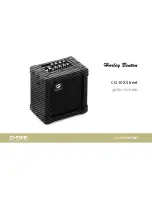
Of critical importance out of these disadvantages, was the cost, and the speed of operation. A key
design criteria for me was to be able to switch back and forth between transmit and receive in a
very short time, so as to allow full break-in operation (QSK) where the other station is audible
between the transmission of your own CW dits and dahs. That is not possible with inexpensive
relays, which would be too slow, too noisy (clickety clack) and would wear out quickly.
The solution comes in the form of diode switching. Not just any old diode, PIN diodes. This is a
fascinating topic and I did a great deal of research and experiment to perfect the circuit.
This is essentially the switching requirement:
The block labeled “PA” encompasses the Input attenuator, actual PA circuit, and Low Pass Filter
discussed earlier.
During transmit, SW2 should be open (Off), with SW1 and SW3 closed (On), such that 5W power
output from the QCX reaches the input of the PA through SW1. 50W power from the PA output
passes through SW3 to the antenna. At the same time SW2 should be open (Off). Crucially, the
Off isolation of SW2 must be somewhat more than the gain of the PA under all foreseeable
circumstances (including at all frequencies of interest, and during transients at key=down/key-up).
If it is not, then a positive feedback situation will exist and power will travel around the loop from
output to input, in a self-sustaining spurious oscillation, that is at the very least undesirable and at
the worst could cause damage to the PA.
During receive, SW1 and SW3 should be open (Off) so that the PA is isolated from the circuit; and
SW2 should be closed to allow the antenna to be connected to the Receiver input (QCX antenna
port).
Ideally the insertion losses through the switches should be very low. And when they are Off, the
isolation should be very high. It turns out as I mentioned above, that isolation loss of SW2 is very
important so as to prevent positive feedback leading to spurious oscillations; furthermore low
insertion loss, particularly in SW3, is very important otherwise some of the 50W power which we
have worked so hard for, will be reduced. You can talk about what a small difference, in dB terms
or S-point terms, losing 5W out of 50W makes, all you like… fact is, when you see that loss on a
‘scope, it bites. Irritating, to say the least.
For switches, we use PIN diodes. These have been used in transceiver designs for ages and
ages. Ordinary diodes cannot be used for switching because they could act as Rectifiers,
switching on and off in time with the RF cycle.
A PIN diode, however, is different. It is a diode with a
wide undoped “intrinsic semiconductor” region
between the usual P-type and N-type doped
semiconductor layers of a regular diode (Wikipedia
image).
50W QCX PA kit assembly
1.00q
54
















































